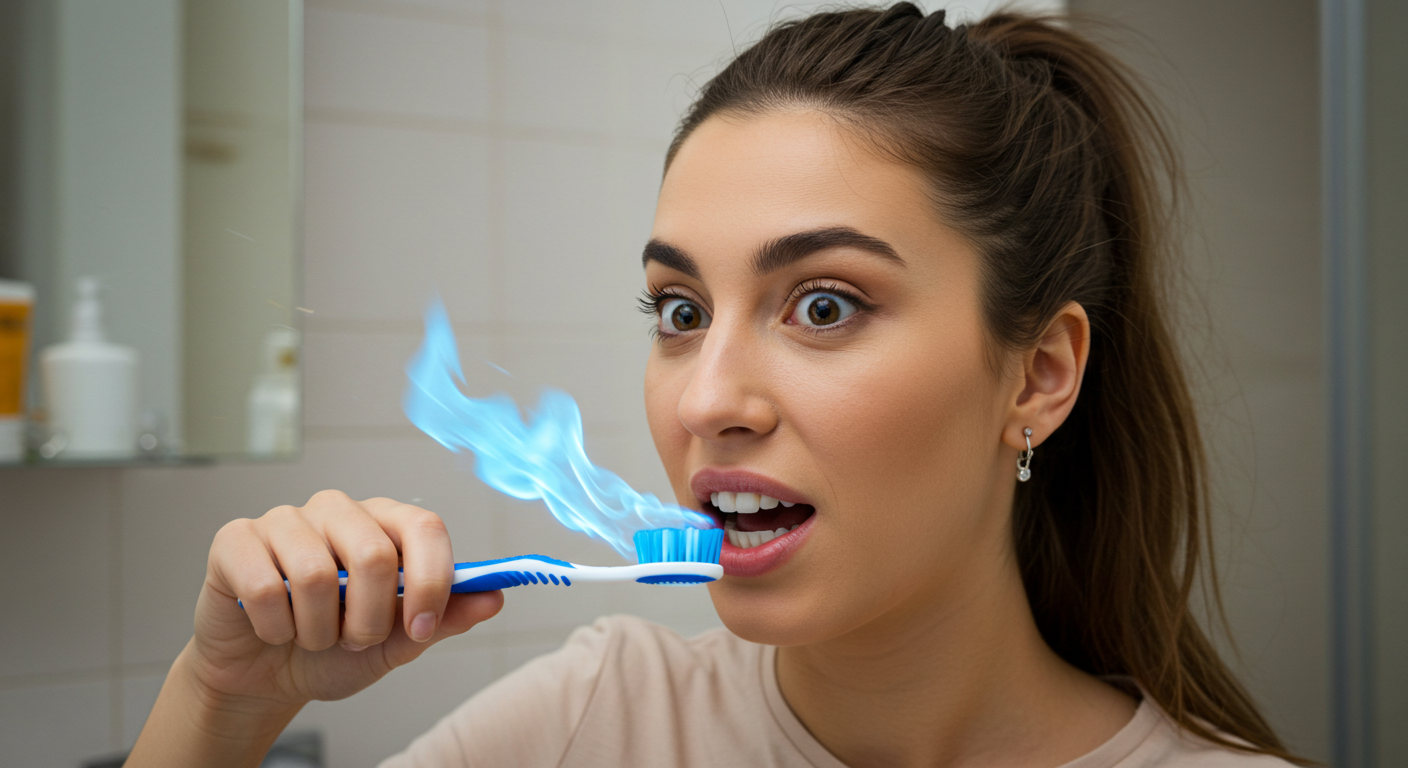Back in the day, our ancestors used to rely on using chewing sticks and wood sponges to maintain their oral health but modernisation brought about new inventions and improved ways of keeping our mouth and breadth fresh and healthy.
Toothpaste is something we use every day, trusting it to keep our teeth clean and our breath fresh. However, what if the very product designed to protect our oral health contained harmful chemicals? Your toothpaste might be slowly poisoning you due to toxic ingredients found in many popular brands. Scientific studies have revealed that some toothpaste components can have long-term health effects, raising concerns about their safety.
I today’s post we will talk about your toothpaste and how it is killing you slowly. Yes, you read that right. We will delve into the topic and discuss science-based studies conducted on the common ingredients that we find is most toothpastes in the market.
The Hidden Dangers in Your Toothpaste
Many commercial toothpastes contain chemicals that, when used over time, may pose risks to your overall health. While the amounts per use may seem small, daily exposure over the years can accumulate, leading to potential harm. Here are some of the most concerning ingredients:
1. Fluoride – Friend or Foe?

Fluoride has been praised for its role in preventing cavities, but excessive exposure has been linked to serious health concerns. A 2019 study published in JAMA Pediatrics found that high fluoride intake during pregnancy was associated with lower IQ scores in children. Furthermore, a report from the National Research Council (NRC) concluded that long-term fluoride consumption could contribute to thyroid dysfunction and skeletal fluorosis, a condition that weakens bones.
While fluoride is effective at strengthening enamel, swallowing too much—especially by children—can lead to toxicity. Your toothpaste might be slowly poisoning you if you are unknowingly ingesting fluoride beyond safe levels.
Read Also: Doctors Won’t Tell You This, But Sitting is Worse Than Smoking!
2. Triclosan – Banned in Soaps, Still in Toothpaste

Triclosan, an antibacterial agent, was banned from soaps by the FDA in 2016 due to concerns over antibiotic resistance and endocrine disruption. However, it is still found in some toothpastes. A study published in Environmental Science & Technology revealed that triclosan can accumulate in the body, affecting hormone balance and potentially increasing the risk of breast cancer.
If this ingredient was deemed too dangerous for hand soap, why is it still allowed in toothpaste? The long-term effects of triclosan exposure raise serious questions about its safety.
3. Sodium Lauryl Sulfate (SLS) – The Foaming Toxin
SLS is responsible for the foaming action in toothpaste, but it has been linked to oral irritation and mouth ulcers. A study in the Journal of Clinical Periodontology found that individuals who used SLS-free toothpaste experienced fewer canker sores. Additionally, SLS is a known skin irritant and can disrupt the delicate tissues inside the mouth.
4. Artificial Sweeteners and Dyes – More Than Just a Cosmetic Issue
Many toothpastes contain artificial sweeteners like saccharin and aspartame, which have been linked to metabolic disorders. Research in Food and Chemical Toxicology suggests that artificial sweeteners can interfere with gut bacteria, potentially leading to digestive and immune system issues.
Similarly, artificial dyes like Blue 1 and Red 40 have been associated with hyperactivity in children and potential carcinogenic effects. These additives serve no functional purpose in dental health but may contribute to health risks.
5. Titanium Dioxide – A Potential Carcinogen?

Titanium dioxide (TiO2) is used in toothpaste to give it a bright white appearance. However, in 2021, the European Food Safety Authority (EFSA) declared TiO2 unsafe as a food additive due to its potential DNA-damaging effects. While its absorption through toothpaste remains under debate, the concerns about its long-term safety cannot be ignored.
Are Natural Toothpaste Safer?
With growing awareness of these risks, many people are switching to natural or fluoride-free toothpaste alternatives. Brands that use safer ingredients like calcium carbonate, xylitol, baking soda, and herbal extracts provide effective cleaning without the risks associated with harmful chemicals.
A study published in Caries Research found that xylitol-based toothpaste were effective in reducing cavity-causing bacteria. Additionally, baking soda-based toothpaste has been shown to whiten teeth naturally and neutralize harmful acids in the mouth.
Read Also: The Science Behind Déjà Vu: Unlocking the Mystery of the Mind
How to Choose a Safer Toothpaste
If you want to avoid potentially toxic ingredients in toothpaste, here are some tips:
- Check the ingredient list – Avoid fluoride if you are already getting it from other sources like water.
- Go SLS-free – This can help prevent mouth irritation and ulcers.
- Choose natural antibacterial agents – Look for ingredients like tea tree oil and neem instead of triclosan.
- Avoid artificial sweeteners and dyes – They provide no real benefit and come with health risks.
- Consider remineralizing toothpaste – Some natural options contain hydroxyapatite, a safe alternative to fluoride.
Final Thoughts
Brushing your teeth is essential for maintaining good oral hygiene, but it’s equally important to be mindful of what’s in your toothpaste. Your toothpaste might be slowly poisoning you if it contains harmful chemicals that build up in your system over time. By making informed choices and opting for safer alternatives, you can protect both your oral health and overall well-being.
Switching to a healthier toothpaste might seem like a small change, but it can have a big impact in the long run. The next time you pick up a tube of toothpaste, take a closer look at the label—because what you don’t know might just be harming you.



